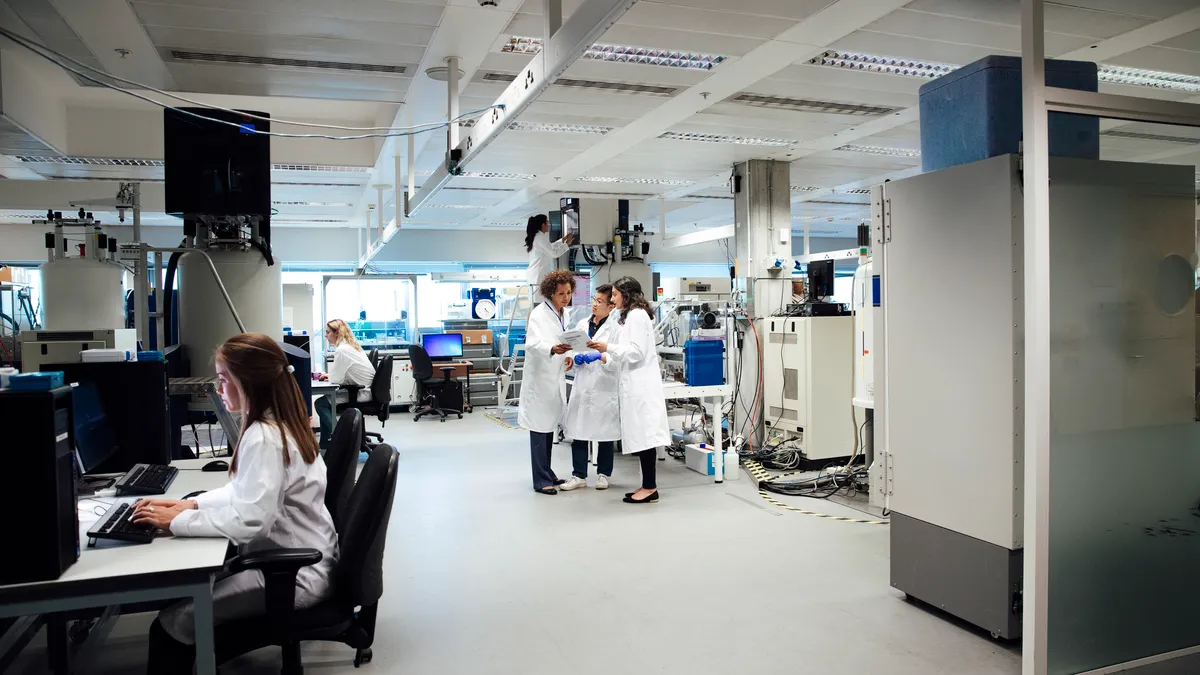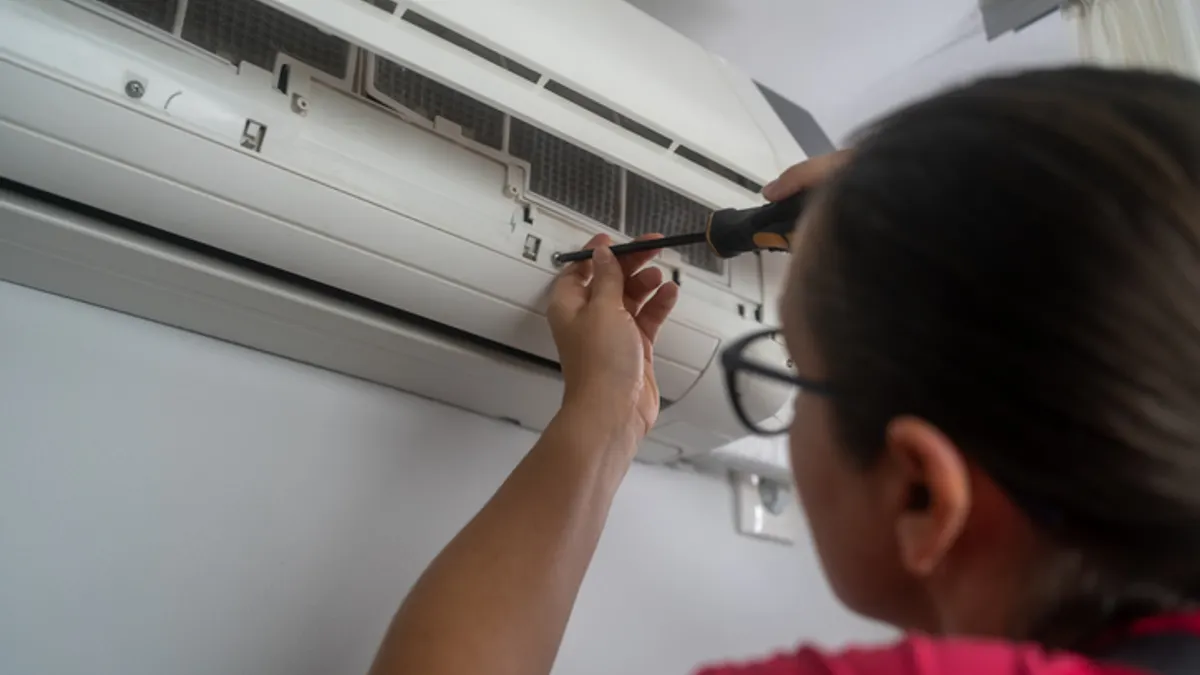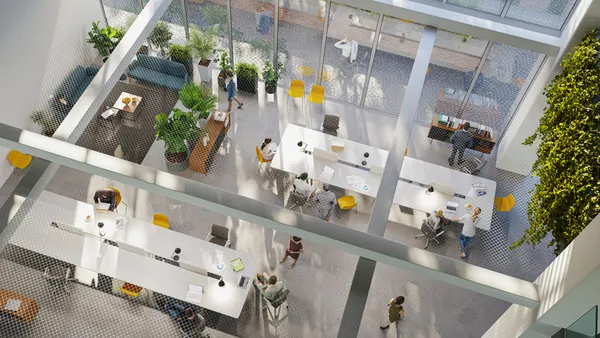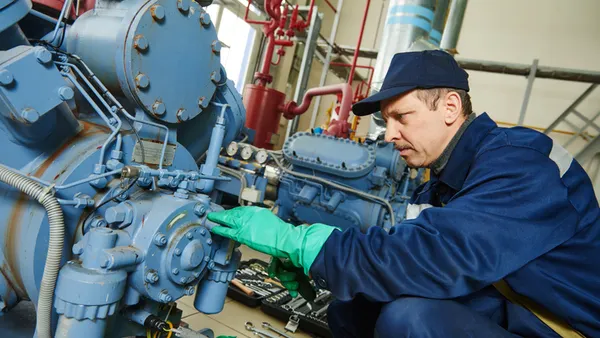The life sciences sector’s use of artificial intelligence is likely to transform research space demand, design and operations needs, commercial real estate experts say.
Rising healthcare demand and strong funding from private, public and government sources will lead to stronger demand for lab and life sciences manufacturing space in 2025 than 2024, Tucker White, manager of life sciences market intelligence at Avison Young, said in the firm’s 2025 commercial real estate outlook. But pricing pressures from governments, insurers and consumers on drugs and treatments could negatively affect occupier spending on research and development that requires lab space, White said.
The increase of AI and machine learning affects the electricity and technology needs of data centers — including those on-site at life sciences facilities, employee headcount and lab and office space design, CBRE said in a December report.
“The workplace will need to evolve to remain relevant and stimulate innovation, creativity and inspiration — all necessary in the evolving world of biotechnology,” CBRE says in the report.
While quarterly AI-related pharma job postings tripled between the fourth quarter of 2020 and the second quarter of 2023, AI’s use in drug discovery and development is “still in its infancy,” the CBRE report cautions. This creates uncertainty around AI’s future in the sector. Thus, the company suggests the need for future flexibility in office and lab space for life sciences companies.
Companies have many ways to prepare real estate portfolios for AI’s future requirements while maintaining flexibility in the interim, the CBRE report states.
“There are a lot of different science research fields, and they're ever-evolving. So the [facility] design also has to be very flexible. … It has to be adaptable, reusable, and you have to have enough spare capacity … to be able to chase what the science is,” Mario Perez, life sciences lead of the Americas West region at Arup, said in an interview.
“People are having difficulty figuring out where the next new drug is going to come out, or where the new breakthrough in a certain field is going to be.” Perez said. “And so a lot of times [life science companies] will go back to buildings that they built three or four years ago, and they’ll renovate them again, because the science took them in a different direction.”
Life sciences organizations with AI aspirations must work with stakeholders to align with the “rapidly changing world of data center supply and demand,” the CBRE report states, which may mean increasing server capacity or locating data centers on-premises or outsourcing and determining how these costs affect the bottom line.
Life sciences facilities already have more electrical and power density needs than standard buildings due to redundancy needed for generators, cooling and plumbing systems, uninterrupted power supplies and higher exchange rates for HVAC systems, Perez said.













